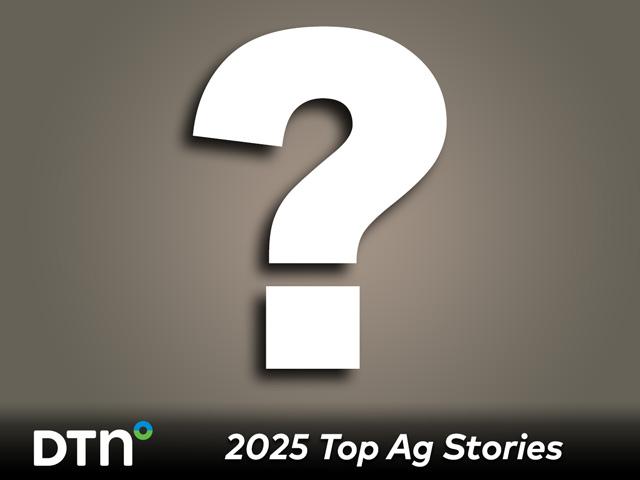Ag Policy Blog
Planting Still a Priority for MFP Payments
OMAHA (DTN) -- Farmers who are not able to plant a crop this spring will not get a trade-aid payment and should not expect higher payment levels than normal under prevent-plant insurance, according to a USDA question-and-answer on Market Facilitation Program payments and the new disaster aid released late Monday.
USDA issued a statement on trade aid and disaster relief from Agriculture Secretary Sonny Perdue along with some questions-and-answers where the department sought to spell out some clarity.
On Market Facilitation Program payments, USDA reiterated the department could not make those payments to farmers who cannot get a crop planted this spring.
The news release and statement from Perdue stated, "USDA does not have the legal authority to make MFP payments to producers for acreage that is not planted. To qualify for a 2019 MFP payment, you must have planted a 2019 MFP-eligible crop. Producers unable to plant their crop should work with their crop insurance agent to file a claim."
Farmers who file a prevented-planting claim and plant a cover crop, however, could qualify for "minimum" MFP payment, USDA stated. "If you choose to plant a cover crop with the potential to be harvested, because of this year’s adverse weather conditions, you may qualify for a minimal amount of 2019 MFP assistance. You must still comply with your crop insurance requirements to remain eligible for any indemnities received."
When it comes to planting a second crop or cover crop, USDA cautioned that producers "must comply with crop insurance requirements to remain eligible for a full prevented planting indemnity. USDA encourages you to visit with your crop insurance agent to ensure you are aware of those various options for your operation. If you choose to plant a cover crop with the potential to be harvested, because of this year’s adverse weather conditions, you may qualify for a minimal amount of 2019 MFP assistance."
P[L1] D[0x0] M[300x250] OOP[F] ADUNIT[] T[]
USDA reminds producers they "should plant what works best for your operation and what you would plant any other year," without a trade-aid payment. The 2019 MFP will be based on a single county payment rate that will be multiplied by a farm's total planting of MFP-eligible crops. The payments "are not dependent on which of those crops are planted in 2019, and therefore will not distort planting decisions," USDA stated.
A full list of the eligible crops includes: alfalfa hay, barley, canola, corn, crambe, dry peas, extra-long staple cotton, flaxseed, lentils, long grain and medium grain rice, mustard seed, dried beans, oats, peanuts, rapeseed, safflower, sesame seed, small and large chickpeas, sorghum, soybeans, sunflower seed, temperate japonica rice, upland cotton, and wheat.
-Dairy producers will receive a per hundredweight payment on production history and hog producers will receive a payment based on hog and pig inventory for a later-specified time frame.
-Tree nut producers, fresh sweet cherry producers, cranberry producers, and fresh grape producers will receive a payment based on 2019 acres of production.
A farmer's total payment-eligible plantings cannot exceed that farmer's 2018 eligible plantings.
USDA also tempered expectations from the potential payments for prevented-planting under the disaster bill. The bill gives USDA the authority to compensate prevented-planting losses for 2019 up to 90%. But the Q&A notes, "While that authority exists, USDA must operate within finite appropriation limits. It is highly unlikely that the supplemental appropriation will support that level of coverage in addition to crop insurance."
USDA stated Congress funded $3.005 billion for the 2018 and 2019 disasters, and requires USDA to prioritize how those funds are spend. USDA intends to provide aid on prevented-planting losses "within the confines of our authority."
USDA also will determine "on a case-by-case basis" whether the department will allow the higher prevented-planting benefits outside of areas that are under a presidential or secretarial disaster declaration.
The disaster bill gives USDA authority to pay farmers higher prevented-planting protection, and also gives USDA authority to allow the "harvest price option" on prevented-planting claims. In its Q&A, USDA stated the department "is currently exploring legal flexibility to provide assistance that better utilizes the harvest price in conjunction with revenue and prevent planting policies."
On haying and grazing, USDA is reviewing the prevented-planting restrictions in the Federal Crop Insurance Act to see what might be done to loosen the Nov. 1 date for haying and grazing on that prevented-planting ground. stated producers should visit with their crop-insurance agent to understand the best options available to them. USDA stated, "Further clarity regarding this haying and grazing date will be forthcoming."
For farmers who do not have crop insurance, USDA reiterated that farmers still must plant a crop to be eligible for an MFP payment, including again that farmers who plant a cover crop "may qualify for a minimum amount of 2019 MFP assistance."
Farmers who did not have insurance could still qualify for compensation under prevented-planting losses under the disaster bill, especially if they farm in one of the secretarial or presidential disaster areas. Again, producers outside of those areas will be considered "on a case-by-case basis."
Chris Clayton can be reached at Chris.Clayton@dtn.com
Follow him on Twitter @ChrisClaytonDTN
© Copyright 2019 DTN/The Progressive Farmer. All rights reserved.




Comments
To comment, please Log In or Join our Community .